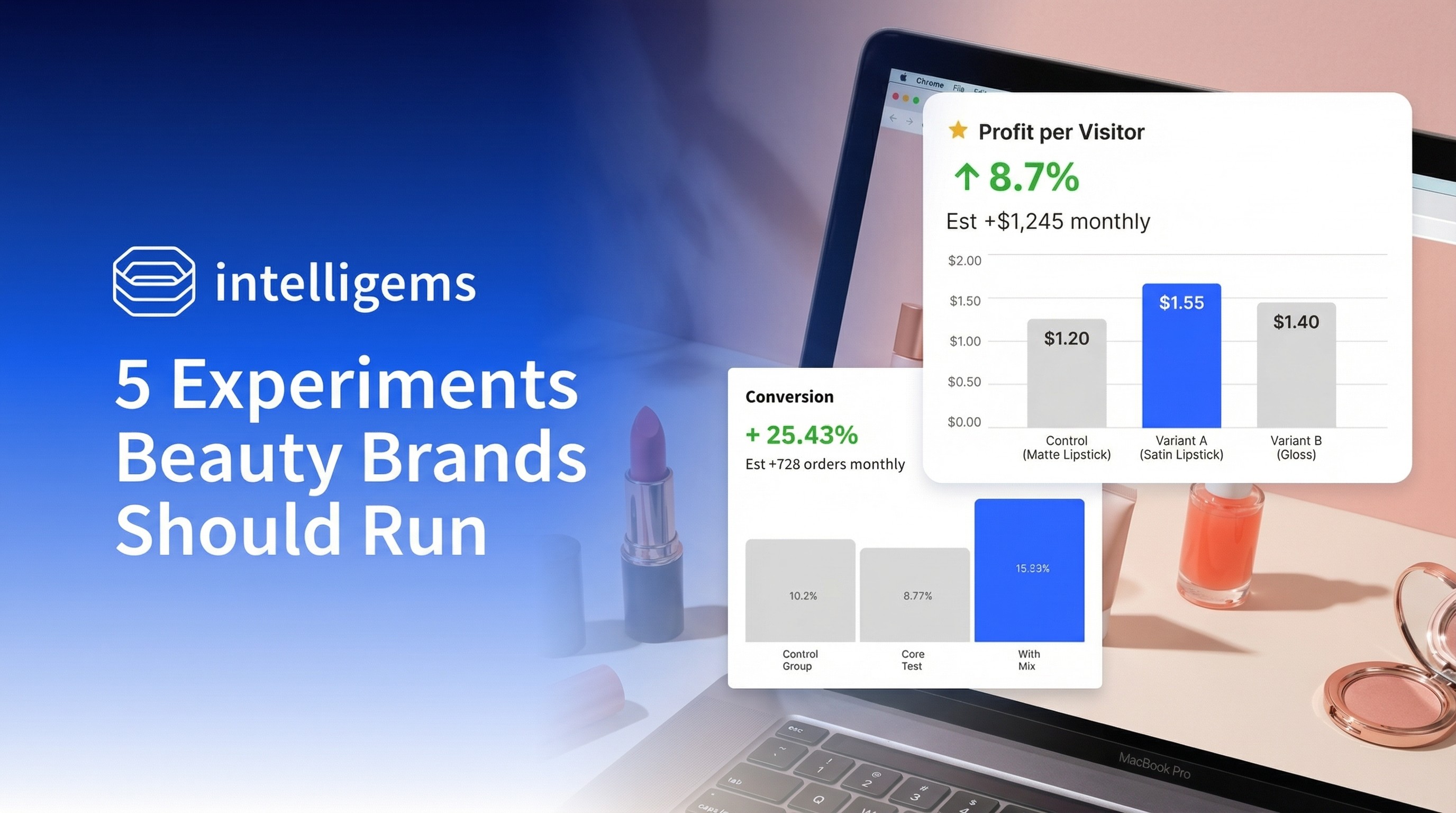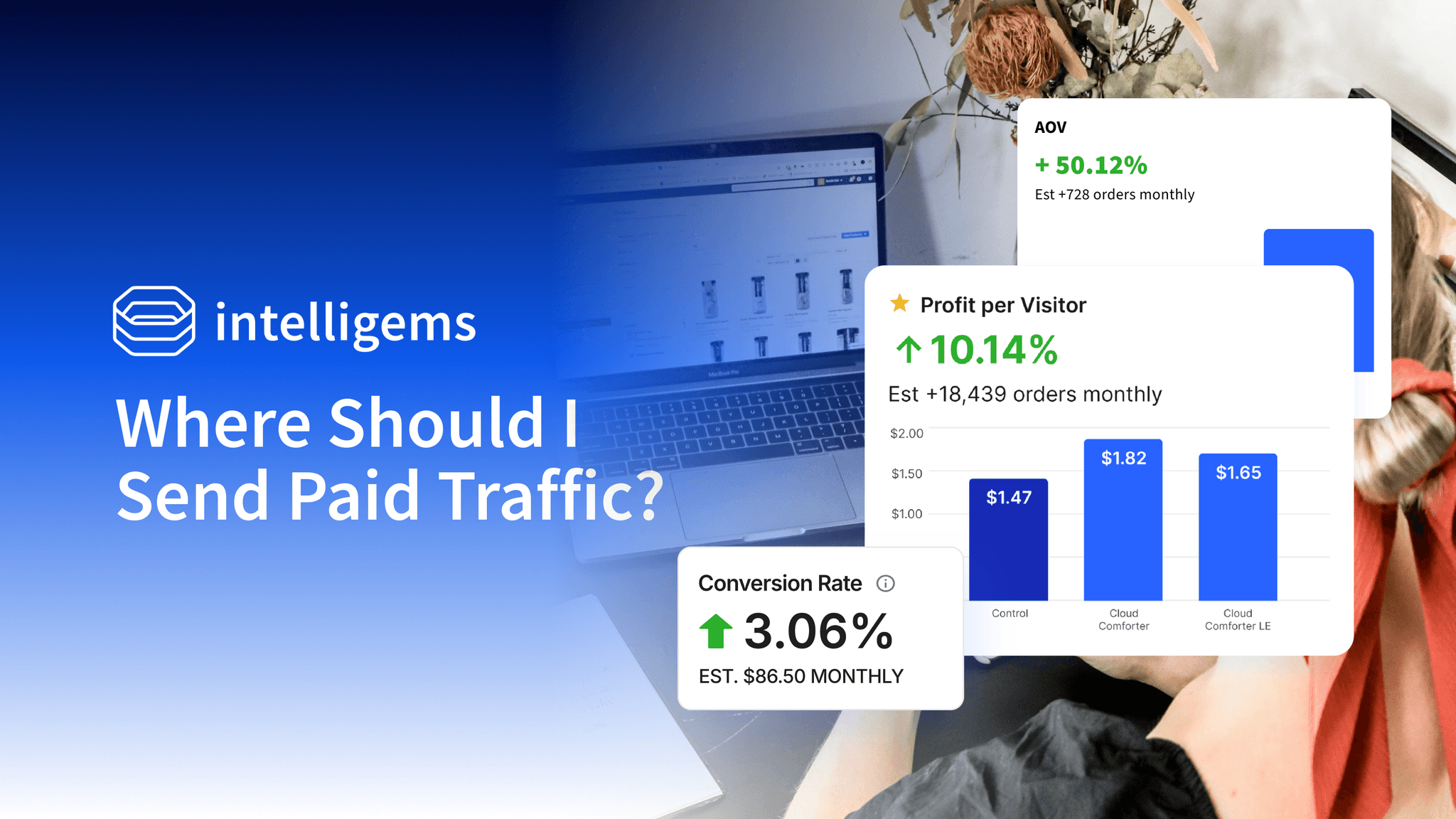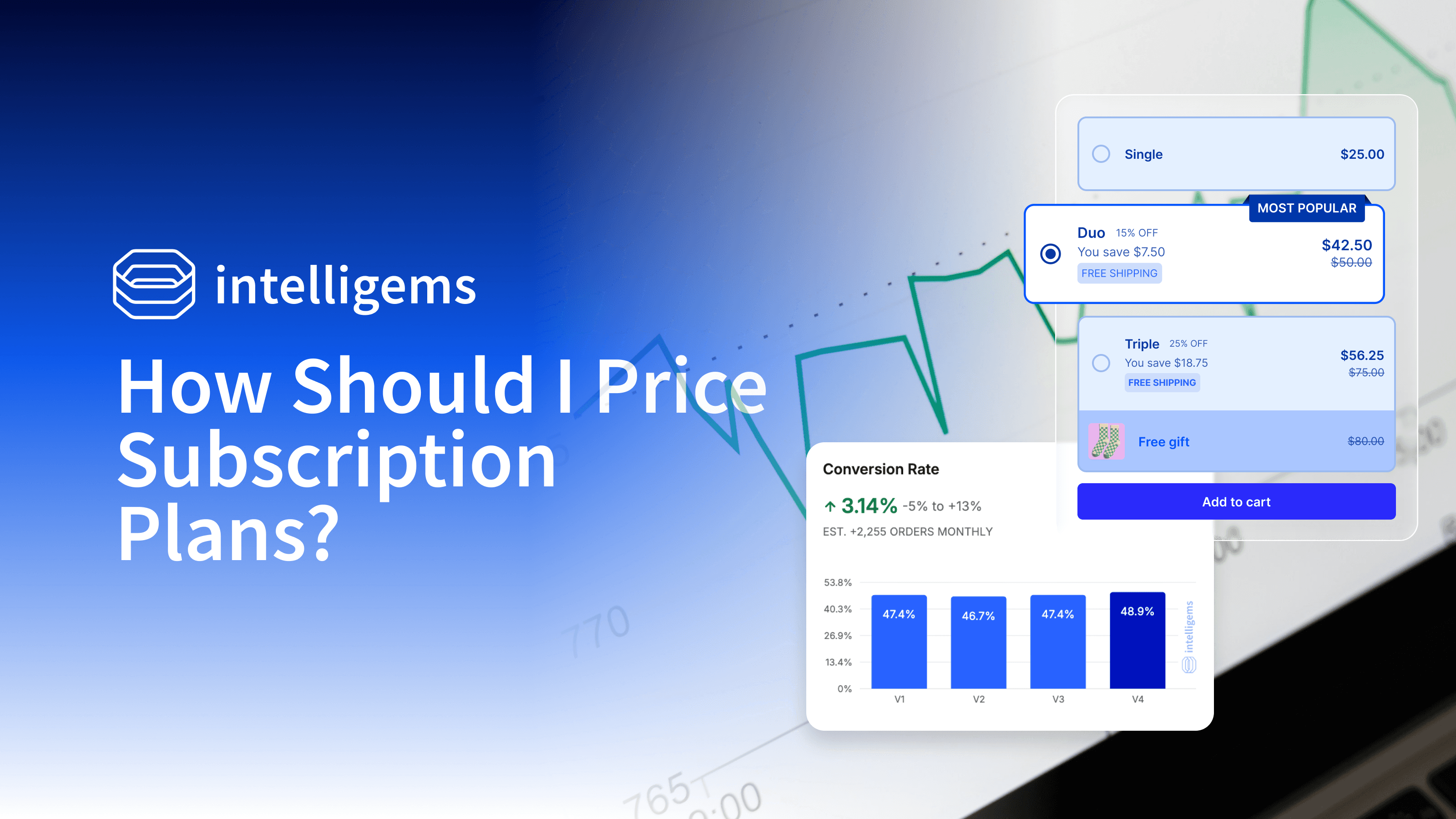AB Testing
Sep 25, 2025
What Should My Free Shipping Threshold Be?
Set your free shipping threshold too low and you leave money on the table. Set it too high and customers walk away. Here’s how to find the sweet spot.
The simple answer, slightly above where your orders naturally cluster.
The longer answer requires us to go deeper. How do you find those clusters? Why are orders clustering? How do I test these thresholds so I'm no longer just guessing, and I actually know?
Let's dive in and answer those questions and more.
How Do I Find My Ideal Threshold?
Look for natural order clusters in your order data
Most brands pick $50, $75, or $100 because that's what everyone else does. But copying competitors means you're optimizing for their customers, not yours. Your ideal threshold is already hiding in your order data.
Look for natural order clusters in your Shopify data. Analyze a representative period of orders (e.g., 90 days), sort by value, and identify where multiple orders group within a small range (e.g., $5) of each other. Now compare where that cluster is relative to your existing threshold.

Cluster above your current threshold? When customers naturally spend $47 and your threshold is $75, they're not stretching. They're leaving.
Cluster below your current threshold? When customers naturally spend $82 and get free shipping at $75, you just gave away margin when you didn't need to.
Not seeing an obvious cluster? Don't worry, we cover that a bit later.
Check your current threshold:
Pull a representative sample of recent orders (e.g., your last 100 orders)
If relatively few orders fall near your threshold (e.g., less than 30% within $10), it might be too high
If many orders hit your threshold exactly (e.g., more than 50%), you might be leaving money on the table
Look for low-margin "filler" items that only appear just above threshold
Why Pay Attention to Order Clusters?
Order clusters show you buying behaviors you should use to create an advantage
Clusters represent natural buying patterns: product combinations that solve problems, psychological price comfort zones, and the inherent value of your offerings.
Instead of a smooth distribution across all values, orders group at specific amounts. These aren't random. They represent:
Product combinations that make sense together
Price points customers are comfortable with
The natural value of solving their problem
Bundle sizes that feel complete
For example, if orders cluster at $35 and $85 but your threshold is $50, that misalignment forces awkward behavior. Customers either abandon at $35 or feel manipulated when stretching to $50.
Moving the threshold to $35 might drop average order value, but could increase conversion and potentially increase profit per visitor.
What's the Simplest Test I Can Run?
Run a test comparing your current threshold to variant(s) based on your cluster data
This brand noticed two natural clusters lower and higher than their current $100 threshold. They elected to test both at the same time while also trying a much higher threshold just to see what would happen. Spoiler: that highest threshold did not perform well.
Here's what to do:
Step 1: Find Your Clusters
Analyze a meaningful period of orders (e.g., your last 90 days). Sort by order value. Look for where orders group together. You're looking for values where multiple orders land within a small range (e.g., $5) of each other.
Step 2: Pick Your Test
Choose clusters that are different from your current threshold. In the example shown, this brand was at $100 and found clusters both below ($75) and above ($125) that threshold. They decided to test both, plus added an exploratory higher threshold ($145) to learn more about price sensitivity.
You can start simple with just one alternative threshold, or test multiple if you have clear clusters at different price points.
Starting with your most obvious cluster gives you the clearest signal.

Step 3: Run It
Test your new threshold against your current one. Split traffic evenly across your variants. Don't just measure AOV though, measure:
Conversion rate change
Profit per visitor (the metric that actually matters)
Cart abandonment rate
Percentage hitting threshold exactly
Run until you have enough data to feel confident. High-traffic stores might know in couple of weeks. Lower-traffic stores might need a more than that. Let data, not the calendar, guide your decision.
Step 4: Decide
If profit per visitor increases, you found a better threshold. If it decreases but conversion significantly improves, consider the lifetime value impact. Sometimes more customers at lower margins beats fewer customers at higher margins.

What If I Don't See Clear Clusters?
Get creative with other tests, like building shipping into the price
Your threshold might not matter as much as you think. Test removing it entirely with free shipping built into prices.
Not seeing patterns could mean:
Your products solve different problems at different price points
Your threshold isn't influencing behavior (good or bad)
Your traffic comes from very different customer segments
Consider testing the removal of thresholds entirely. Build shipping costs (e.g., $5) into all prices and offer "free shipping always." This approach could increase conversion with minimal margin impact. Sometimes simplicity outperforms optimization.
Should I Match Competitor Thresholds?
No. Pay attention to your competition but don't copy, test what works for you
Your competitors have different margins, ship from different locations, serve different customers, or might simply be wrong.
Your threshold depends on:
Your specific product mix and margins
Your customer base and their expectations
Your shipping costs and locations
Your business goals (growth vs. profitability)
Copying others means optimizing for their reality, not yours. The question isn't "what threshold do competitors use?" It's "what thresholds do my customers already have?"
The Decision Framework
Forget best practices. Forget benchmarks. Your threshold decision should be based on one thing: what your customers are already telling you through their behavior.
The path forward is simple:
Look at where orders cluster today
Test thresholds at those points
Measure profit per visitor, not just AOV
Let data guide your decision
Every day you operate with an untested threshold, you could be frustrating customers unnecessarily or giving away margin needlessly. Usually both, just at different cart values.
Ready to discover where your orders naturally cluster and test what that means for profitability? Start with your data, test your hypothesis, and let’s get you testing beyond what’s typical.
Ecommerce Strategy
Shipping Testing
Expert Guide







